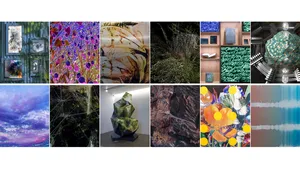Welcome to San Antonio: Hidden Gem of the Lone Star State

The Lone Star State is home to one of the most unique and historic cities in the United States. San Antonio, Texas is a UNESCO World Heritage City of Gastronomy and the Culinary Capital of Texas with the best food arts fusions you will ever taste. An 11-day Fiesta. An incredible Riverwalk with an even more incredible back story. And some of the best art and architecture in America.
To inspire your next visit, 19 organizations in the city have partnered with Google Arts & Culture to create an immersive online experience featuring 60+ curated stories, 1,600+ artifacts, 100+ videos, and 5 sites captured in 360° Street View. You can explore different parts of the city’s culture, from the history of the Alamo to the present-day confluence of cultures, including Indigenous, Latino, German, Black, Asian to name but a few. Visit goo.gle/ExploreSanAntonio to discover these treasures.
Read on to discover seven of my favorite hidden secrets about the city.
1. The first and only UNESCO World Heritage Site in Texas
In 2015, UNESCO designated a grouping of five Spanish colonial missions in the San Antonio area as a World Heritage site, one of only 24 UNESCO World Heritage sites in the United States. Explore the colonial-era architecture at San Antonio Missions National Historical Park, and check out The Alamo to see why San Antonio is called the Alamo City.
2. The largest collection of Latino art in the US and a bustling arts scene
San Antonio is a capital of Latino culture in the US, which is reflected in local art collections and stunning public art with ties to Latino heritage. The San Antonio Museum of Art’s collection spans from the ancient Americas to the present and includes an outstanding collection of popular art. Centro de Artes Gallery celebrates Latino art, and be sure to explore contemporary art centers, including Ruby City and The Contemporary at Blue Star, and Culture Commons Gallery. The McNay Art Museum’s Spanish Colonial architecture houses a phenomenal collection from around the world, including contemporary Latino artists.
Murals celebrating the city’s Hispanic roots are all around the city, from a celebration of Selena to the installation Familia y Cultura es Vida. Towering over downtown San Antonio is the famous The Torch of Friendship, a 65 foot sculpture made by the Mexican sculptor Sebastian, honoring the bond between San Antonio and Mexico, dating from pre-1836 when Texas was a part of Mexico.
3. The River Walk is an oasis and hub for local businesses
A 15-mile urban waterway runs through the middle of the city and is the heart of San Antonio’s food, arts, and small businesses, from a floating fish installation to some of Texas’ most diverse culinary offerings. The River Walk, located one level below street level, is a multifaceted destination — while it is the most visited attraction in Texas, it also is a natural and calm world unto itself.
4. Native plants and gardens take center stage
Have you heard of the Blanco Crabapple, Eve's Necklace and Texas Mountain laurel? The Texas landscape is rich and varied — featuring desertscapes, evergreen piney woods, rolling hill country and thousands of miles of gulf beaches — and all of it is full of life. One place to see it all is the Texas Native Trail at the San Antonio Botanical Garden, a 1.5-mile loop trail that winds through the native plants of Texas. Villa Finale Museum and Gardens is another gorgeous stop for greenery and manicured gardens.
5. San Antonio is a gastronomic capital with diverse flavors
The city is not only the birthplace of Tex-Mex cuisine, but a true center of gastronomy and the Culinary Capital of Texas. San Antonio’s legacy is a confluence of cultures: from Latino and Tejano heritage to German and Asian immigrants, chances are you’ll find something for your palate.
6. Home of the American Cowboy
Did you know San Antonio is home to the American Cowboy and Mexican Vaquero? The Briscoe Western Art Museum and the Witte Museum offer unique perspectives on the role of this American figure, from the Black men and women who shaped ranching culture to Werner Segarra’s photographs of contemporary Norteño Cowboys.
7. Diverse communities with rich histories
Historical organizations honor the difficulties and triumphs of past San Antonians. The San Antonio African American Community Archive and Museum commemorates African American history in the city, and state Historical Commission sites Casa Navarro and the Landmark Inn explore the life of early Texan leaders and settlers. The Holocaust Memorial Museum of San Antonio is dedicated to the stories of Holocaust survivors. Annual events, including the University of Texas at San Antonio’s Asian Festival, the largest Martin Luther King March in the country, and largest Diwali in America are must-sees as well.
Mission Concepción by Unknown | World Heritage Office, The City of San Antonio on Google Arts & Culture
Still Life with Parrot by Unknown | San Antonio Museum of Art on Google Arts & Culture
Pharm Table by Chef Elizabeth Johnson | World Heritage Office, The City of San Antonio on Google Arts & Culture






